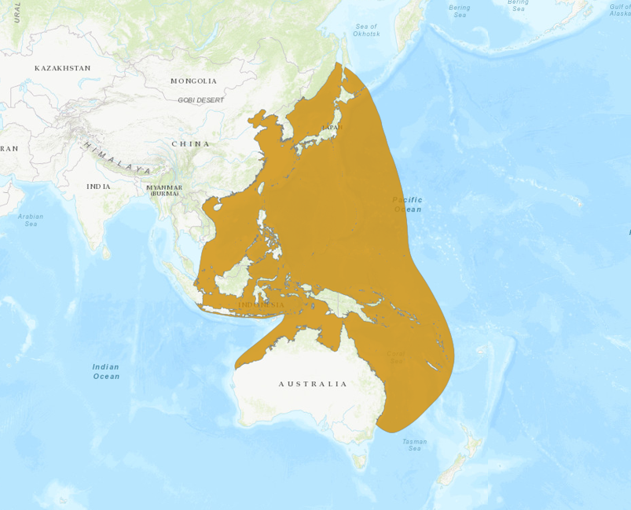Birdfinding.info ⇒ Fairly common in offshore and coastal waters of Japan, Taiwan, and southern South Korea, where it occurs year-round but is more common from March to November. It can often be seen from ferries, including the routes from Honshu north to Hokkaido and south to the Izu and Ogasawara Islands, from Busan to Jeju Island, and from Taipei to Dongyin. Accessible seawatch points where it can often be seen include Choshi (east of Tokyo), Magang Harbor (east of Keelung, Taiwan), and Laotieshan Lighthouse (Liaoning, China). In eastern Australia a few are seen most years in January and February on pelagic trips out of Southport, Kiama, and Sydney. The handful of California records are concentrated in Monterey Bay.
Streaked Shearwater
Calonectris leucomelas
Breeds in East Asia and disperses south through the western Pacific and adjacent seas.
Breeding. Nests colonially in burrows and crevices on islets. Arrives at colonies in March and departs around late October.
Colonies are located on islets along the coasts of the main Japanese islands from Hokkaido to Kyushu, south through the Ryukyu Islands to Taiwan, offshore to the Ogasawara Islands, and along the along both sides of the Korean Peninsula north at least to Vladivostok Bay (Karamzina Island) and west along the China’s Yellow Sea coast to Shandong (Dagong Island).
Nonbreeding. During the breeding season, nonbreeders occur throughout East Asian waters beyond the usual breeding areas, from the southern Sea of Okhotsk to Taiwan, mostly in near-coastal waters and at low densities over open ocean in the western Pacific. Much of the global population remains in these areas year-round.
From November to March a significant portion of the population migrates south into waters of western Micronesia, eastern Indonesia, the Banda, Timor, Arafura, and Solomon Seas. Small numbers migrate to the Coral and Tasman Seas, regularly south to the vicinity of Sydney, casually to Victoria, and once to North Island, New Zealand (found dead on Kawhia Beach, Waikato in February 2006).
In the Indian Ocean, regularly winters south along the western coast of Australia to the vicinity of Perth. Rarely reported from waters of Southeast Asia and western Indonesia, but apparently regular in small numbers, with occasional records (some of small flocks) across the Bay of Bengal as far as southwestern India and Sri Lanka.

Streaked Shearwaters in breeding colony on Hide-jima. (Iwate, Japan; September 11, 2010.) © Hiroyuki Tanoi
In the central and eastern Pacific, vagrants have been recorded on several occasions in nearshore waters of California (most around Monterey Bay in September-October), Hawaii, and Oregon; and once far inland in Wyoming (found dead June 13, 2006).
Exceptional vagrants have been recorded west across the Indian Ocean to Eilat (Israel), the Gulf of Oman, and eastern South Africa (offshore from Durban).
Identification
A large, lanky, broad-winged shearwater with a fairly long wedge-shaped tail, brown upperparts, white underparts, a mostly white face with variable speckles and streaks, and a long pale-gray bill.

Streaked Shearwater showing wedge-shaped tail and pattern of pale and darker brown on the upperparts. (Offshore from Sydney, New South Wales, Australia; February 2, 2020.) © Paul Lynch
The head can be either mostly brown or mostly white, but is usually mixed, with white predominant on the face and forehead and brown on the crown. Nearly always shows significant specking and streaking.
The upperparts also vary: sometimes nearly solid dark or warm-brown overall, but more typically a mix of paler and darker brown, often extensively scaled with whitish fringes, and sometimes showing a distinct dark M pattern.

Streaked Shearwater showing distinctive streaked primary coverts on the underwing. (Offshore from Sydney, New South Wales, Australia; February 2, 2020.) © Jodi Webber
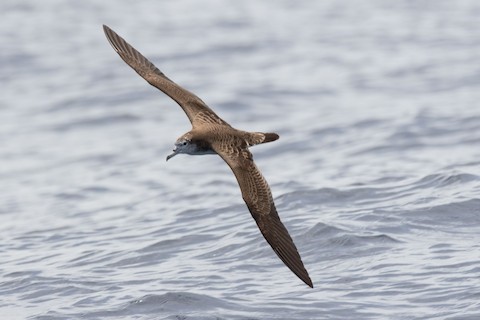
Streaked Shearwater. (Offshore from Mooloolaba Queensland, Australia; March 4, 2017.) © Chris Pratt

Streaked Shearwater showing extensive whitish scaling on brown upperparts. (Offshore northeast of Keelung, Taiwan; May 4, 2021.) © Jimmy Yao

Streaked Shearwater. (Offshore from Sydney, New South Wales, Australia; February 2, 2020.) © Jodi Webber

Streaked Shearwater with mostly white head and irregular white scaling on the back. (Offshore from Tomakomai, Hokkaido, Japan; September 19, 2011.) © Stuart Price
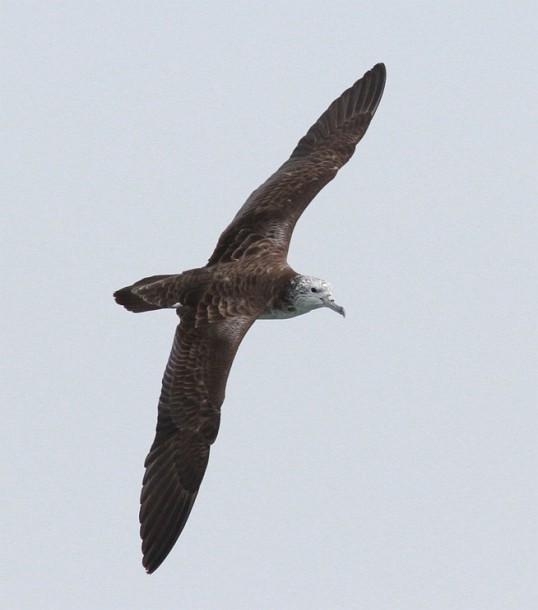
Streaked Shearwater with mostly solid dark-brown upperparts and mostly white head. (Laotieshan Nature Reserve, Liaoning, China; August 9, 2014.) © Tom Beeke

Streaked Shearwater with mostly warm-brown upperparts. (Offshore from Kiama, New South Wales, Australia; February 22, 2020.) © Paul Lynch

Streaked Shearwater. (Offshore between the Torishima and Ogasawara Islands, Japan; May 26, 2017.) © Lars Petersson

Streaked Shearwater showing dark M pattern and extensive whitish scaling on brown upperparts. (Offshore from Miyake-jima, Izu Islands, Japan; April 2019.) © Ian Wilson

Streaked Shearwater. (Offshore from Maizuru, Kyoto, Honshu, Japan; July 15, 2019.) © Hiroyuki & Shoko Tanoi

Streaked Shearwater. (Offshore from Kiama, New South Wales, Australia; January 25, 2020.) © Chris Barnes

Streaked Shearwater with irregular scaling on back. (Offshore east of Yilan, Taiwan; August 2019.) © chih-wei_jack_chang
The underparts are essentially all-white, including the wing-linings, with dark tail and flight feathers, except that it has distinctive dark streaks across the primary coverts—a unique pattern.
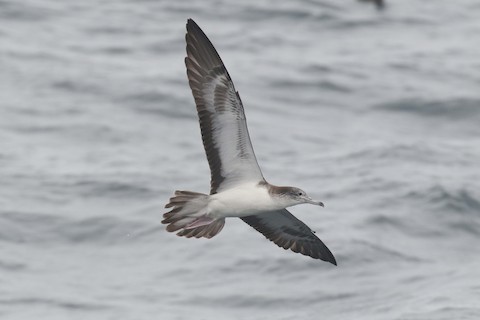
Streaked Shearwater showing characteristic streaking on underwing primary coverts. (Offshore from Sydney, New South Wales, Australia; February 2, 2020.) © Richard Webber
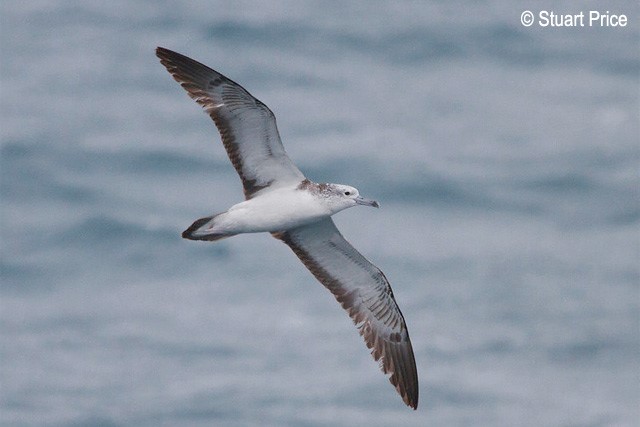
Streaked Shearwater with atypically subtle streaking on underwing primary coverts. (Offshore from Tomakomai, Hokkaido, Japan; September 19, 2011.) © Stuart Price
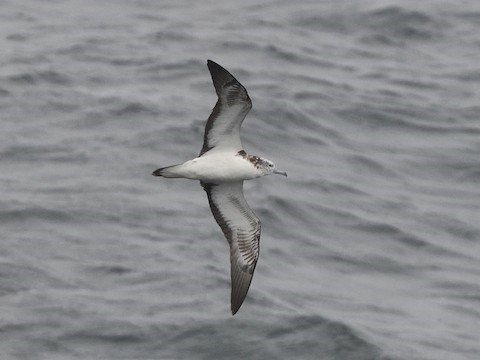
Streaked Shearwater showing characteristic streaking on underwing primary coverts. (Offshore north of Higashidori, Aomori, Honshu, Japan; August 11, 2019.) © Shoko Tanoi

Streaked Shearwater showing characteristic streaking on underwing primary coverts. (Offshore from Kiama, New South Wales, Australia; February 27, 2021.) © Scott Baker
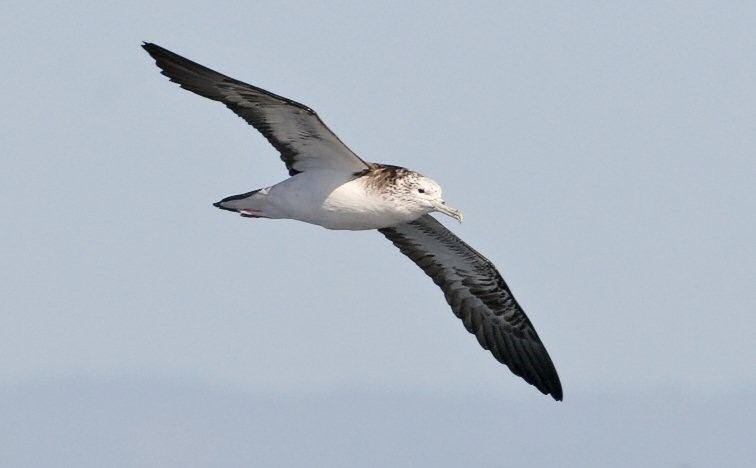
Streaked Shearwater. (Monterrey Bay, California; October 12, 2008.) © Todd Easterla
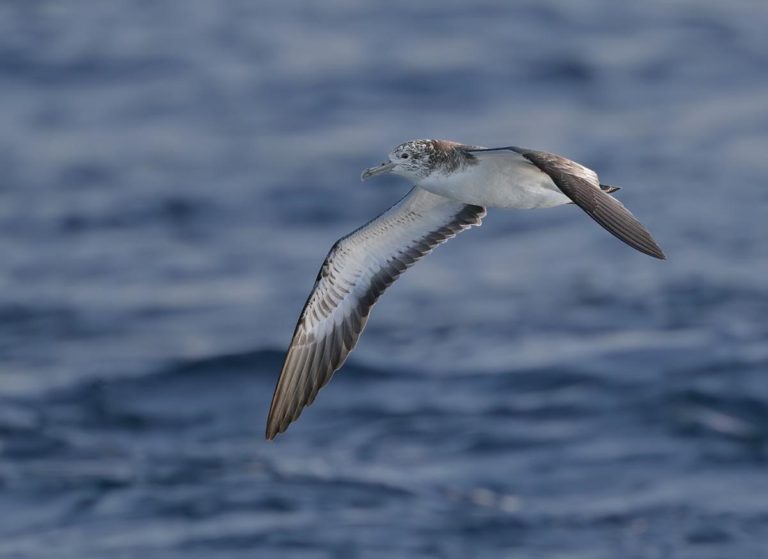
Streaked Shearwater with atypically subtle streaking on underwing primary coverts. (Offshore from Miyake-jima, Izu Islands, Japan; April 2019.) © Ian Wilson

Streaked Shearwater showing characteristic streaking on underwing primary coverts. (Offshore from Sydney, New South Wales, Australia; February 2, 2020.) © Paul Lynch
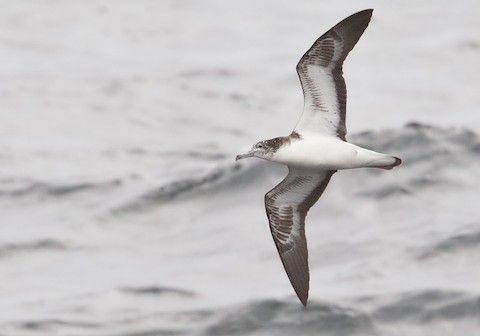
Streaked Shearwater with heavy streaking on underwing primary coverts. (Offshore between the Torishima and Ogasawara Islands, Japan; May 26, 2017.) © Lars Petersson

Streaked Shearwater showing characteristic streaking on underwing primary coverts. (Offshore from Kiama, New South Wales, Australia; January 25, 2020.) © Richard Webber
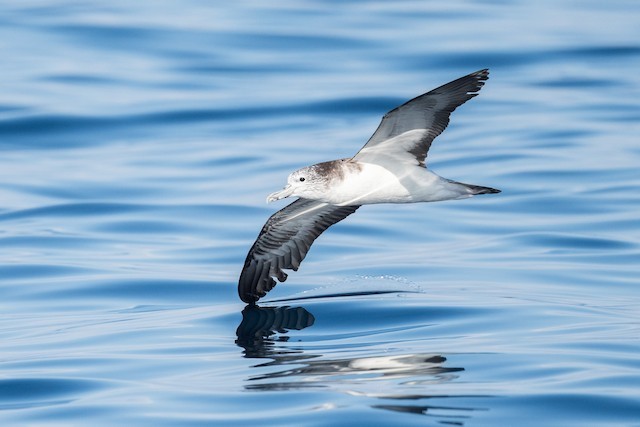
Streaked Shearwater. (~35km Offshore from Miyako, Iwate, Honshu, Japan; July 23, 2020.) © Yann Muzika

Streaked Shearwater. (Offshore from Sydney, New South Wales, Australia; February 2, 2020.) © Jodi Webber

Streaked Shearwater. (Offshore from Iwaki, Fukushima, Honshu, Japan; May 24, 2015.) © Hiroyuki Tanoi

Streaked Shearwater. (Offshore from Iwaki, Fukushima, Honshu, Japan; May 24, 2015.) © Hiroyuki Tanoi

Streaked Shearwater. (Offshore from the Ogasawara Islands, Japan; September 21, 2020.) © Yann Muzika
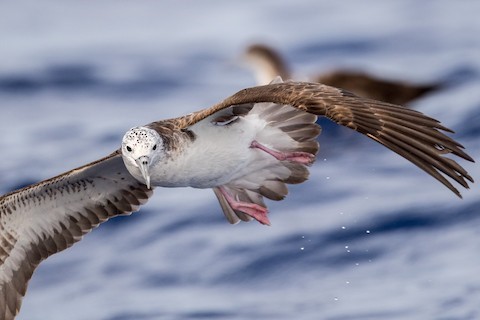
Streaked Shearwater. (Offshore from the Ogasawara Islands, Japan; September 21, 2020.) © Yann Muzika

Streaked Shearwater showing streaked pattern on the head. (Offshore from the Ogasawara Islands, Japan; September 21, 2020.) © Yann Muzika
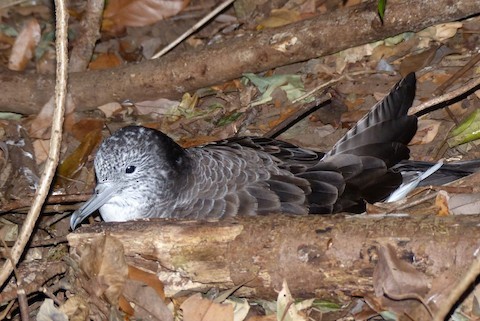
Streaked Shearwater in breeding colony. (Birojima, Miyazaki, Kyushu, Japan; March 19, 2017.) © Kim Nelson

Streaked Shearwater in breeding colony. (Mikura Island, Izu Islands, Japan; September 27, 2005.) © kanachoro
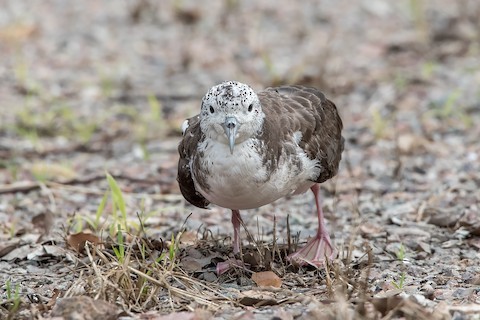
Streaked Shearwater, a stranded individual found a few miles inland, showing pale pink legs and feet. (Tianyuan, Zhejiang, China; August 8, 2020.) © 浙江 重要鸟讯汇整
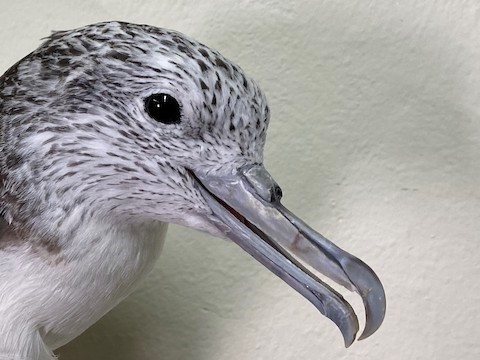
Streaked Shearwater, close-up of stranded individual showing details of streaked head pattern. (Socheong, Incheon, South Korea; October 10, 2020.) © Jugdernamjil Nergui

Streaked Shearwater in breeding colony. (Birojima, Miyazaki, Kyushu, Japan; March 19, 2017.) © Kim Nelson

Streaked Shearwater, a beached individual. (Buffalo Creek, Darwin, Northern Territory, Australia; October 13, 2013.) © Laurie Ross | Tracks Birding & Photography Tours
Cf. Wedge-tailed Shearwater. Some pale morph Wedge-tailed have approximately the same plumage color and pattern as some Streaked Shearwaters, with similar whitish scaling on the upperparts. Streaked averages a little larger than Wedge-tailed, but they are similarly proportioned and both have wedge-shaped tails. Wedge-tailed is so variable that generalizations are difficult, but two plumage differences are very consistent.
First, Streaked usually shows a pale face (often including the forehead) and distinct streaking elsewhere on the head, whereas pale morph Wedge-tailed usually has an unstreaked, all-dark head, including the face. Second, although both species’ underwings typically have whitish linings with contrastingly dark tips and trailing edges, Streaked usually has many dark streaks on the wing linings—especially past the wrist on the primary coverts. Wedge-tailed can show some streaks there as well, but typically not as pronounced as on Streaked.
Cf. Buller’s Shearwater. Streaked Shearwater can have approximately the same plumage color and pattern as Buller’s, although it tends to be much less crisply defined. Streaked differs most noticeably in having white on the face and forehead, a mostly pale bill, and more extensively dark underwings, with heavily streaked primary coverts.
Notes
Monotypic species.
IUCN Red List Status: Near Threatened.
References
Alderfer, J., and J.L. Dunn. 2014. National Geographic Complete Birds of North America (Second Edition). National Geographic Society, Washington, D.C.
BirdLife International. 2018. Calonectris leucomelas. The IUCN Red List of Threatened Species 2018: e.T22698172A132630766. https://dx.doi.org/10.2305/IUCN.UK.2018-2.RLTS.T22698172A132630766.en. (Accessed July 28, 2021.)
Brazil, M. 2009. Birds of East Asia. Princeton University Press.
eBird. 2021. eBird: An online database of bird distribution and abundance. Cornell Lab of Ornithology, Ithaca, N.Y. http://www.ebird.org. (Accessed July 28, 2021.)
Harrison, P. 1983. Seabirds: An Identification Guide. Houghton Mifflin, Boston.
Howell, S.N.G. 2012. Petrels, Albatrosses & Storm-Petrels of North America. Princeton University Press.
Howell, S.N.G., I. Lewington, and W. Russell. 2014. Rare Birds of North America. Princeton University Press.
Howell, S.N.G., and K. Zufelt. 2019. Oceanic Birds of the World. Princeton University Press.
Pratt, H.D., P.L. Bruner, and D.G. Berrett. 1987. A Field Guide to the Birds of Hawaii and the Tropical Pacific. Princeton University Press.
Pyle, R.L., and P. Pyle. 2017. The Birds of the Hawaiian Islands: Occurrence, History, Distribution, and Status. Version 2 (January 1, 2017). http://hbs.bishopmuseum.org/birds/rlp-monograph/. B.P. Bishop Museum, Honolulu, Hawaii.
Robson, C. 2002. Birds of Thailand. Princeton University Press.
Seabirding of Japan. 2021. Streaked Shearwater. http://seabirding-japan.com/streaked-shearwater/. (Accessed July 28, 2021.)
Sinclair, I., P. Hockey, W. Tarboton, and P. Ryan. 2011. Birds of Southern Africa (Fourth Edition). Random House Struik (Pty) Ltd. Cape Town, South Africa.
Xeno-Canto. 2021. Streaked Shearwater – Calonectris leucomelas. https://www.xeno-canto.org/species/Calonectris-leucomelas. (Accessed July 28, 2021.)


